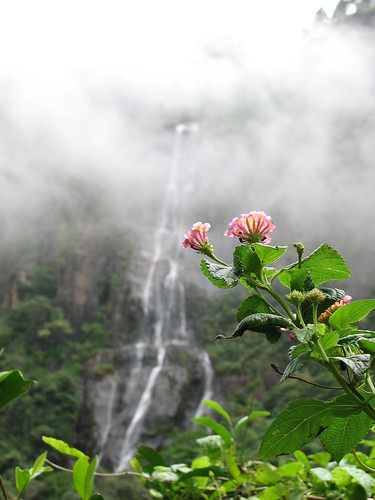Sri Lanka is blessed with over one hundred waterfalls. The tallest is
the Bambarakande Falls which cascades down 263 metres like liquid light.
It is only four miles away from the
Colombo-Bandarawela road in a forest glade, but it is not visited often, though well worth the trip.
Bambarakande is taller than the famous Diyaluma falls which is only 220
metres but thought to be the tallest waterfall in Sri Lanka. The
Diyaluma or Diya Haluma collects its water from the Poonagala Oya in the
vicinity of Koslanda and Wellawaya. Located six miles from Koslanda and
13 miles from Wellawaya, its waters originate from the Mahakande Pass
in Koslanda. You can see this waterfall if you stop a while on your way
to Haputale and detour.
Due to the geological formation of Sri Lanka, the central highlands are
surrounded by peneplains, plateaus and valleys. Rainfall sends a large
volume of water hurtling down the precipitous edges of the highland
mass. The up thrust millions of years ago has caused several peneplains
to form, the highest being well over 6000 ft. It is in this area that
the water is collected when there are showers and flows down along
tributaries down the mountain slopes.















Post a Comment